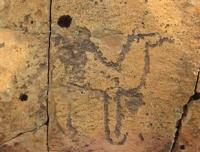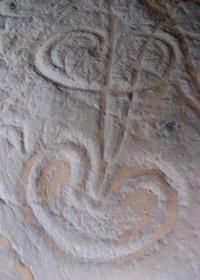Вы здесь
Rock Art in Western Kazakhstan.


Short trip to Atyrau.
“Why do you go away? So that you can come back. So that you can see the place you came from with new eyes and extra colors. And the people there see you differently, too. Coming back to where you started is not the same as never leaving”
Terry Pratchett. “A Hat Full of Sky”.
Commencement of a journey to Uralsk.
Rock Art in Western Kazakhstan includes four administrative Regions – Western Kazakhstan, Atyrau, Aktyube and Mangistau. This vast territory is an aggregation of high and low plains bounded only in the north and south-west by relatively small mountain formations.
Rock art sites are known in the Mangyshlak Peninsula (Mangistau), Ustyurt Plateau and Mugodzhari Mountains that are southern spurs of the Ural Range. The total length of Mugodzhary from the north towards the south is 200km, their median altitude is 450 - 500m.
The mountains mainly consist of magmatic, metamorphic, and occasionally pressed sedimentary rocks. Mugodzhary is classified as low-hill terrain and, in its southern part, consists of low mountains and rolling hills that resemble the Saryarka terrain.
Several rivers – the Emba, Irgiz, Or, Tobol, Taldy– originate there, but most dry out. The Ustyurt Plateau is a vast high plain (up to 370m above sea level) with uniform leveled surfaces bounded by steep precipices up to 150m high.
The plateau is structured by horizontally embedded marine deposits, limestone, and dolomites, where karst developed. Ustyurt is classified as an argillaceous desert with a sharply continental, extremely dry climate with an annual precipitation of 100 – 150mm.
The uniqueness of the Mangistau and Ustyurt natural environment influenced the development of rock art, particularly the almost non-existence of durable rocks as a substrate. Ancient images on soft limestone may only be preserved on closed-in natural surfaces or in a fossilized archeological condition (Koskuduk).
The majority of rock drawings date to the late medieval period and modernity (XVIth – early XXth centuries). At the same time, the properties of the local rocks enabled the creation of excellent drawings filled with ethnographic details.
Finally, the widespread use of rock surfaces in funerary and cultic structures for thematically-rich artistic creations also pertains to the specifics of rock art development in the region.
Authority:
“Rock Art Sites in Kazakhstan”. Alexey E. Rogozhinskiy.
Photo by
Alexander Petrov.







